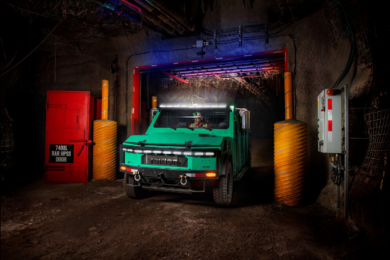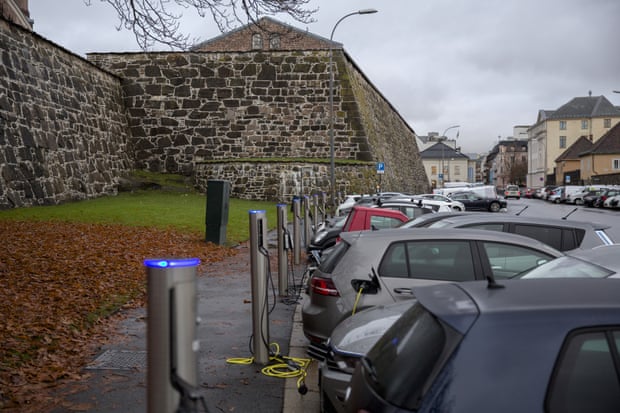SPONSOR: Lomiko Metals is focused on the exploration and development of minerals for the new green economy such as lithium and graphite. Lomiko has an option for 100% of the high-grade La Loutre graphite Property, Lac Des Iles Graphite Property and the 100% owned Quatre Milles Graphite Property. Lomiko is uniquely poised to supply the growing EV battery market. Click Here For More Information


- These trials will help steer business investment decisions in future years
- The benefits from trials so far include:
- Health and safety improvements for employees underground: EVs are much quieter than diesel vehicles and produce less heat and zero exhaust emissions. “From an operator comfort perspective, EVs are certainly an improvement,â€
- Cost savings: EVs can reduce underground ventilation demands and the associated operating and capital expenditure
- Environmental benefits: EVs contribute to the reduction of greenhouse gas emissions.
By the end of 2020, Vale hopes to have upward of 20 battery-powered vehicles operating within its North Atlantic operations, according to Alex Mulloy, Mining Engineer within Vale’s Base Metals Technology and Innovation division.
The plan is for the electric vehicles (EVs) to be operating on a trial basis at its Creighton, Coleman, Copper Cliff, Garson and Thompson mines by the end of the year, with the company having already made significant headway on achieving this goal.
Vale is aligned with the Paris climate-change agreement, and committed to being carbon neutral by 2050, with a 33% cut in greenhouse gas emissions planned across the company by 2030. This is part of a strategy to invest at least $2 billion to combat climate change, which includes the use of battery-electric vehicles.
Vale has already tested Rokion’s battery-powered personnel carriers/utility vehicles at Creighton, while an Epiroc ST7 battery-powered vehicle and Artisan Z40 haul truck have been trialled underground at Coleman.
Mulloy said the green vehicles are going to be evaluated with feedback from operations, as well as operating data, to help Vale understand how they perform in terms of reliability, functionality and the benefits they can offer our people and the business.
The benefits from trials so far include:
- Health and safety improvements for our employees underground: EVs are much quieter than diesel vehicles and produce less heat and zero exhaust emissions. “From an operator comfort perspective, EVs are certainly an improvement,†Mulloy said;
- Cost savings: EVs can reduce underground ventilation demands and the associated operating and capital expenditure; and
- Environmental benefits: EVs contribute to the reduction of greenhouse gas emissions.
“EVs certainly complement the efforts of the business in terms of greenhouse gas and carbon reduction,†Mulloy said. “It’s a great technology. Not only does it enable operational benefit and improvement, it also contributes to our greater goals of reducing our emissions and the impact on the environment.â€
Natalie Kari, Principal Engineer, Strategic Electric Vehicle Implementation, said: “Exhaust emissions from diesel engines are one of the larger contributors to environmental pollution. EVs are an opportunity to increase safety by improving operating conditions and creating a safe work environment. Reducing noise, vibrations, heat, greenhouse gas emissions, and diesel particulate matter, while improving air quality, contributes to creating an attractive work environment for top talent.
“With increased challenging mine conditions at depth, EVs also provide an opportunity to sustain productivity by enabling mines to produce in areas that otherwise may not be feasible without these benefits, contributing towards mining for years to come.â€
These trials will help steer business investment decisions in future years, according to Mulloy.
“Over the coming months, a number of large prime mover vehicles will be delivered,†he said. “When those vehicles arrive, it will be an exciting step in the journey because most of the question marks around the performance of EVs relate to the large vehicles, so that’ll be a chance for us to really put this technology to the test.â€
Kari added: “Our company’s next major steps include collaborating with internal and external industry stakeholders towards safe implementation, comprehensive trial data collection and validation of a robust model towards a final approved five-year implementation strategy. With any new technology, investment in our people will be a priority to ensure they are equipped with the tools necessary for successful operation and maintenance.
“It is thrilling to be a part of leading this effort in a time of increased innovation and environmental awareness,†she continued. “The movement from traditional diesel to electric vehicle brings a feeling of social pride in creating a healthier workplace.â€
SOURCE: https://im-mining.com/2020/06/11/vales-canada-mines-set-battery-electric-vehicle-trials/







